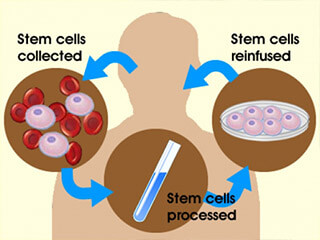

IPS Glial Therapy for White Matter Stroke and Vascular Dementia Genetic modification of the human genome to resist HIV-1 infection and/or disease progression Stem cell-based carriers for RCR vector delivery to glioblastoma Stem Cells for Lung Diseases - Overcoming Barriers to Find New Therapies Niche-Focused Research: Discovery & Development of Hematopoietic Regenerative FactorsĬonference - Lung Regenerative Medicine Workshop Regeneration of Functional Human Corneal Epithelial Progenitor Cells Targeting stromal progenitors to prevent the development of heart failureĬombination therapy to Enhance Antisense Mediated Exon Skipping for Duchenne Muscular Dystrophyĭeveloping gene therapy for dominant optic atrophy using human pluripotent stem cell-derived retinal organoid disease modelsĬlinical Development of an N-cadherin Antibody to Target Cancer Stem Cellsĭifferentiation of Human Hematopoietic Stem Cells into iNKT Cells Therapeutic Translational Research ProjectsĬOVID-19 Antiviral Therapy to Block Direct Cell Injury and Associated Tissue Damageįorming the Hematopoietic Niche from Human Pluripotent Stem Cells Genetic Modification of Stem Cells and T cells to Activate the Immune System to Target Solid TumorsĮngineering Thymic Regeneration to Induce Tolerance Identification and Generation of Long Term Repopulating Human Muscle Stem Cells from Human Pluripotent Stem Cells Quest - Discovery Stage Research Projects Generation of Pluripotent Cell Lines from Human Embryos

The EphrinB2/EphB4 axis in regulating hESC pluripotency and differentiationĢ013 Materials Research Society (MRS) Spring Meeting Symposium Identification of stem cell surface markers as potential therapeutic targets for advanced prostate cancer Inception - Discovery Stage Research Projects Both are in early tests for safety.A Phase I/II, Non Randomized, Multicenter, Open-Label Study of G1XCGD (Lentiviral Vector Transduced CD34+ Cells) in Patients With X-Linked Chronic Granulomatous Disease Japan has two clinical trials using the cells, one involving a treatment for macular degeneration and another for Parkinson’s disease. There are not yet any clinical trials with IPS cells in the United States. For example, scientists can create clusters of brain cells that are affected by Alzheimer’s disease, then test drugs on those brain cells to see if any will affect the course of the illness. Scientists take cells from people with certain genetically linked diseases, create IPS cells, then build models in culture dishes to study the illness. In the United States, IPS cells are used mostly for disease modeling. That’s taken longer than expected, but scientists are starting to develop therapies using IPS cells instead of embryonic stem cells. Many scientists believed at the time of Yamanaka’s discovery that IPS cells would solve the ethical dilemma of obtaining embryonic stem cells from human embryos.
#STEM CELL TREATMENT LOS ANGELES SKIN#
So in theory, scientists could use cells that we have a rich supply of - like skin and blood cells - to replace cells in the brain or heart or other organs that are not easily restored. They can be further developed to become other cell types, such as heart and brain cells.

Induced-pluripotent stem (IPS) cells behave like embryonic stem cells. Yamanaka won the Nobel Prize in 2012 for his discovery. Shinya Yamanaka, who is affiliated with the Gladstone Institutes in San Francisco, found that by applying certain genetic triggers - later, they were called “Yamanaka factors” - to an adult cell he could make that cell pluripotent. Induced-pluripotent stem cells, developed in 2006 by a Japanese scientist, were a potential game changer for stem cell research.Įmbryonic stem cells are defined by their ability to turn into any other kind of cell - a trait known as pluripotency.


 0 kommentar(er)
0 kommentar(er)
